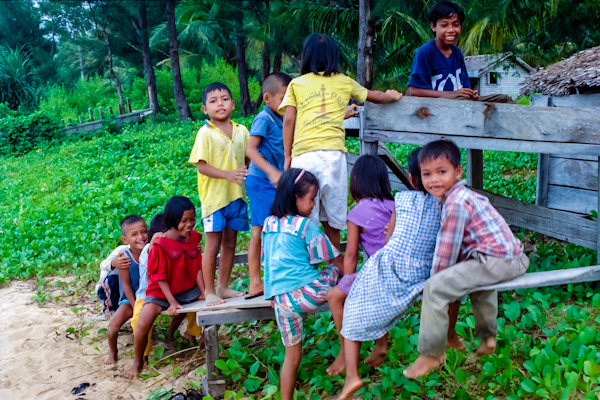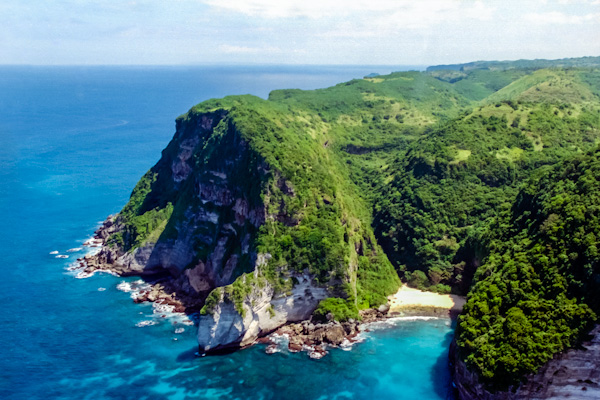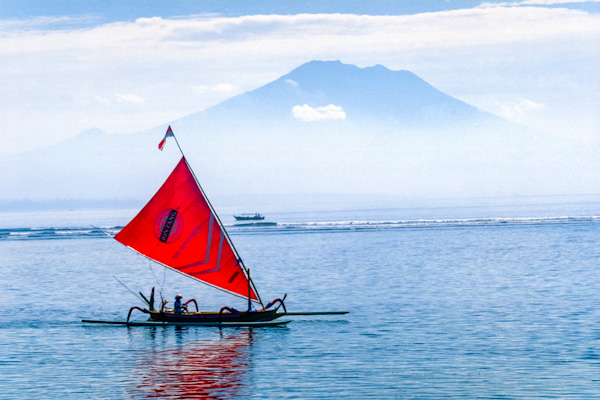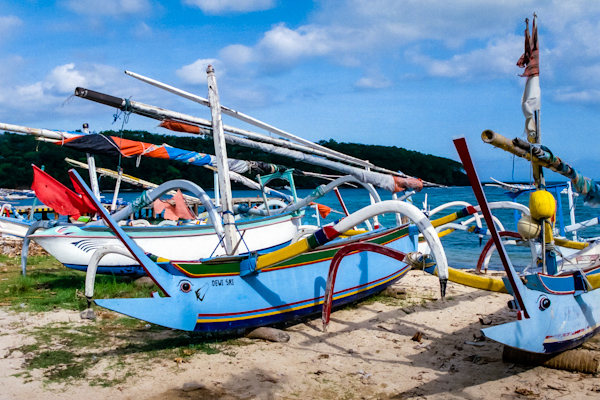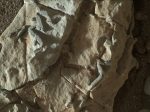Lombok is known for it’s natural beauty and a large variety of landscapes, from tropical beaches to high mountains, dry plains and deep forests. The island is considered to be more “unspoiled” than Bali, tourism is still limited to just a few areas. The size of the island is 5.435 square km, which is relatively small, about 80 times 70 kilometer. Lombok has one of the highest mountains in Indonesia, Gunung Rinjani at 3.726 meters.

Climate

In spite of its small size the climate on Lombok can vary a lot. Parts of the island is quite wet, while other areas are dry and sometimes have long periods of drought which have in past times even lead to famine. Lombok is in general more dry than Bali, but there are more rain here than on Sumbawa and the islands further east. Like on Bali there are two main seasons, the wet season lasts from about November to March
.
Flora and fauna of Lombok

Lombok is one of the islands in the area called “Wallacea”, a transitional zone between the Asian and Australian wildlife (see also Nusa Tenggara, Sulawesi and Maluku). Animals from both these zones live side by side, and the fauna here is quite different from Bali’s, even if these two islands are relatively close.
People and Religion

The population (2000) is about 2.4 million, Mataram on the west coast is the capital with a population of approx. 250.000. Unlike Bali the majority of the population here are Muslim, belonging to the largest ethnic group “Sasak”. Lombok also has a large group of Chinese, mainly Christians, and Arabs. About 10 percent of the population are Balinese Hindus, who still perform much of the same rituals and ceremonies as on Bali, and there are several Hindu temples on the island.

The Wektu Telu religion, a unique religion only found on Lombok, probably originated in the northern town of Bayan. The number of followers today is about 30.000, but nobody knows the exact number for certain. In Sasak language “Wektu” means result, “telu” means three, this probably reflects the Hindu trinity. The religion contains elements from Hindu, Islam and animist traditions.
The followers can eat pork, they fast only three days during Ramadan, but they never do a pilgrimage, even though they bury the dead with the head facing Mecca. Allah is recognized as the only god and Muhammed as his prophet, they regard themselves as Muslims, even if orthodox Muslims don’t accept this. Wektu Telu has it’s own ceremonies, but as most of these do not fall on specific days they are rarely experienced by visitors to the island.
Economy

Main income is agriculture, fishing and textiles. The increasing number of inhabitants has on several occasions led to famine, as late as in 1966 when severe drought killed about 50.000 people. As a consequence many has left Lombok to settle on other islands as part of the governments “transmigrasi” project.

To deal with the drought problems other forms of income besides farming has been developed, like pottery, growing of pearls and seafood. Lately Lombok has become a popular alternative to Bali regarding tourism. Senggigi just north of Mataram is the center for tourism here, but also in the south (Kuta) there are big plans for new hotels and an airport.
Lombok’s history

There is not much we know about Lombok before the 17th century, the island was then split into four regions; Pagasangan, Pagutan, Mataram and Cakranegara, each ruled by a Sasak king. The rivalry between the different regions was taken advantage of by the Balinese kingdom of Karangasem when they invaded West Lombok, and in 1750 they controlled the entire island. The Sasak’s became assimilated in the Balinese society on West Lombok, where they took part in the Hindu traditions. On East Lombok however there was a much less harmonic relationship, and there was several riots against the Balinese aristocracy, like in 1855 and 1871.
Colonization

In 1891 Sasak envoys asked the Dutch on Bali for help and military support against the Balinese rulers, in return the Dutch were invited to rule Lombok. A treaty with the rebels in eastern Lombok was signed in 1894, and a large army was sent to the island. The Balinese king Ratu Agung Ngurah first capitulated, but the younger Balinese princes overruled him and attacked and routed the Dutch.
The victory was short-lived, reinforcements were brought in from Java and after bloody battles the Balinese Rajah had to capitulate again. The Dutch had to pay a large price for the victory, 1.000 of about 4.000 soldiers were killed during the fights. Many Balinese, including the royal family, later committed “puputan”, a mass suicide were they walked unarmed into the Dutch rifles.

The Dutch put the island and it’s people under strict rule with high taxes, and the villagers were forced to sell more and more of their rice crops to pay the taxes. The amount of rice available for consumption fell drastically and famine ravaged the island on several occasions. Despite these problems the Dutch are quite popular as the people who freed Lombok from Balinese rule. Lombok became a part of the new province of West Nusa Tenggara in 1958, and Mataram became the capital in this province.
Art and culture

Bali and the Balinese influence on the local culture is still visible, especially on the western parts of Lombok. West Lombok can look a bit like East Bali with it’s many temples. Lombok also has its own unique form of dance and music, often performed in relation with large ceremonies which are held at the highlights of life like birth, wedding and funeral. Trials of strength among men are very popular in the Sasak society, “peresehan” is a fight between two men using long rattan staves and small shields
value in selected patients. viagra kaufen preis on the level 3-4.
Sildenafil buy viagra online report addresses these issues, not only as isolated health.
dysfunction in a general population of men who were 40than half cialis otc usa.
. Lanca is another way of fighting were the men use their knees to strike each other.

The crafts traditions is normally focused on products of everyday use, like baskets, pottery and textiles, not so much for beauty itself like on Bali. Still traditional Lombok handicrafts are popular among collectors and tourists, especially ikat-textiles.
General
Lombok is easily accessible, there are regular flights to and from the island every day, and frequent arrivals of boats from Bali. There are many hotels of all standards, if you arrive off season there is no need to book in advance. The roads are reasonably good, you can go with a bemo or a bus to the most populated areas. As usual the easiest way to get around is to rent your own car, or a motor bike for those who want to take their chances in the chaotic traffic.

After the unrest which followed the economic crises of 1997 the tourist industry on Lombok has been severely battered and bruised. Serious riots took place here in 2000, the Chinese population was as usual hardest hit with burnt churches, homes and shops. Also lately there has been some religious unrest here, at the moment it is again quiet and peaceful, but it is probably a good idea to check the conditions before you go to Lombok.

